World Bank
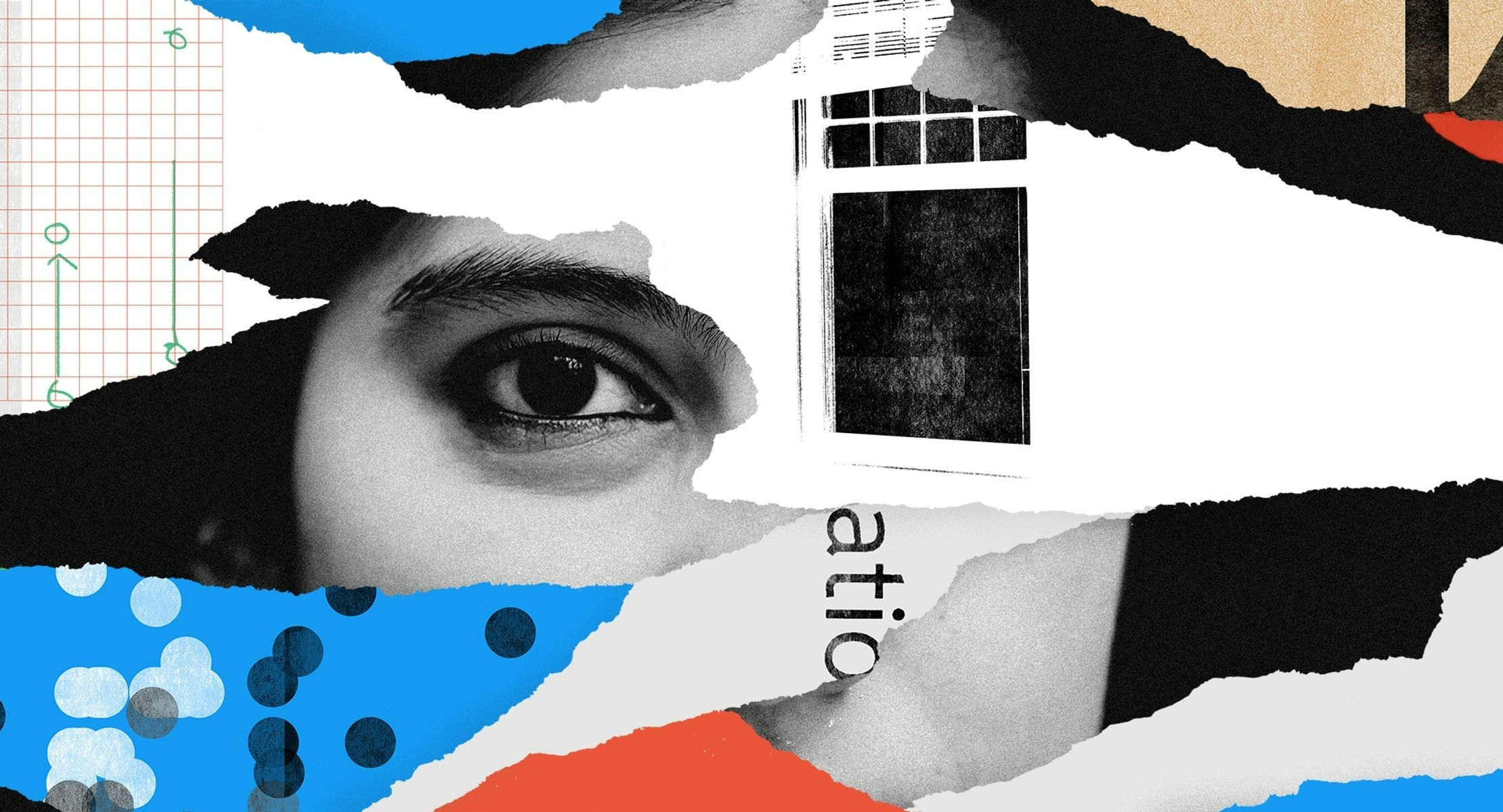
The World Bank Gender Data Portal was created to make gender data impossible to ignore and we had the privilege of contributing two data-led journalistic stories, packed with interactives that explored top-level trends in gender-based violence (GBV).
Story one dissected global data on GBV and we felt it was important to preserve the lives behind every data point. The page opens with a woman’s eye looking out at the reader, fragmenting out into 736 squares, each one representing a million women who’ve suffered violence.
In story two, we used packed circle charts to emphasise a striking disparity between women who reach out to family and friends, versus those willing to seek help from authorities like the police. Interactive dumbbell plots captured the nuance in why women may not choose to come forward, looking at variations by country and age group.
To close the second story, we stepped out of the data and back into real lives, with two case studies on World Bank interventions against gender-based violence in Mozambique and Cambodia, and a call-to-action for policy makers to leverage existing data, improve policies and eradicate GBV.
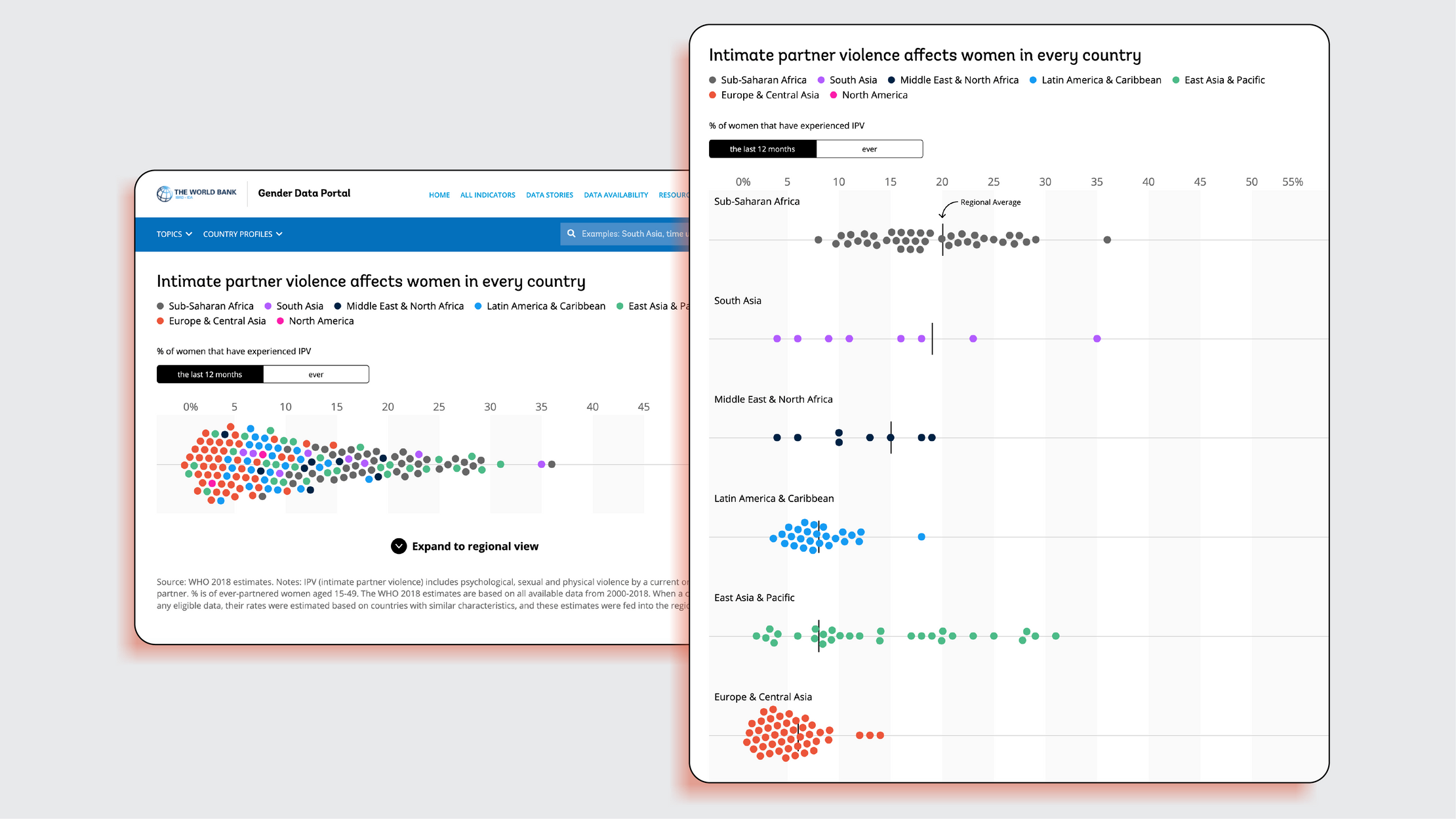
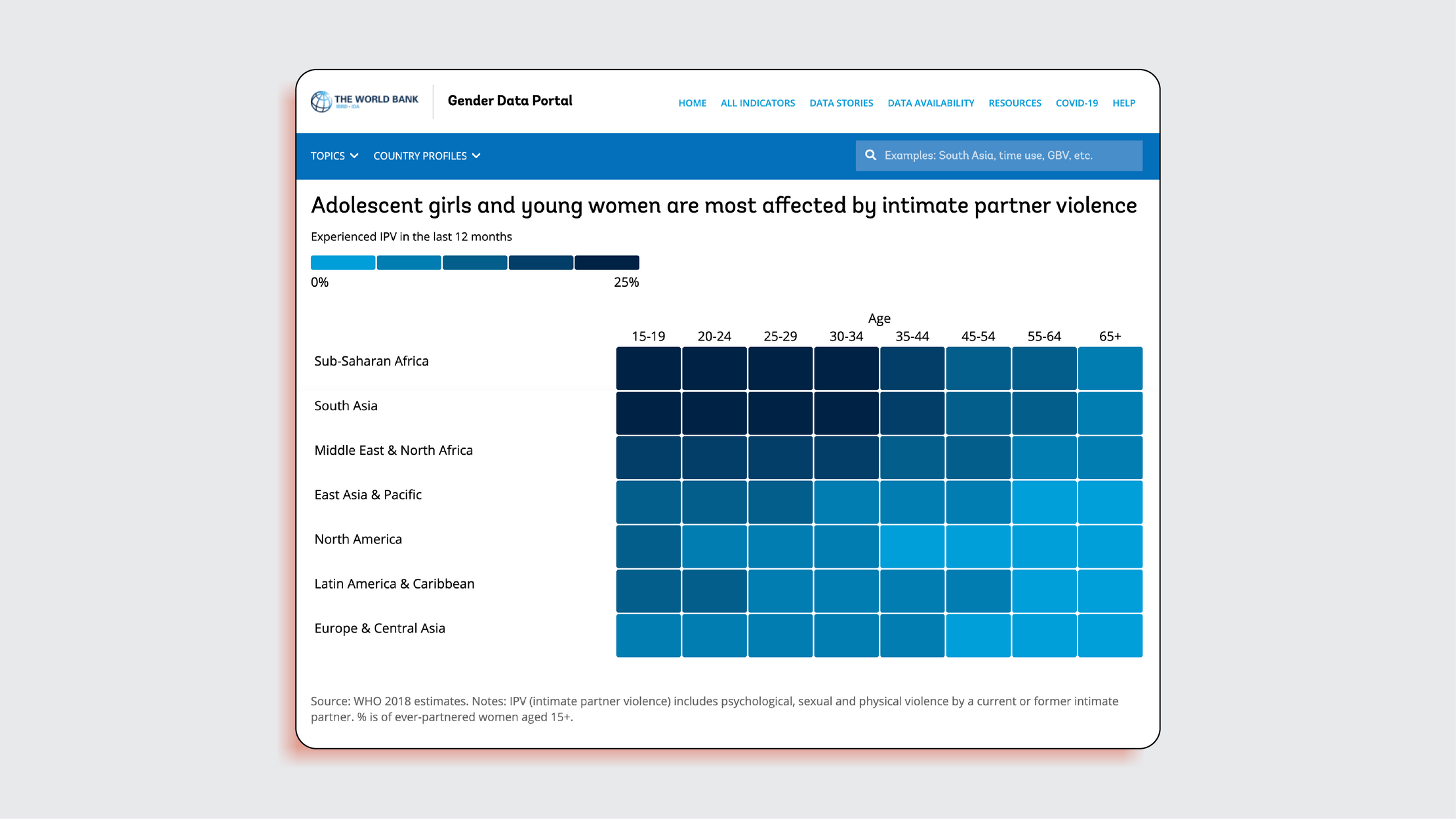
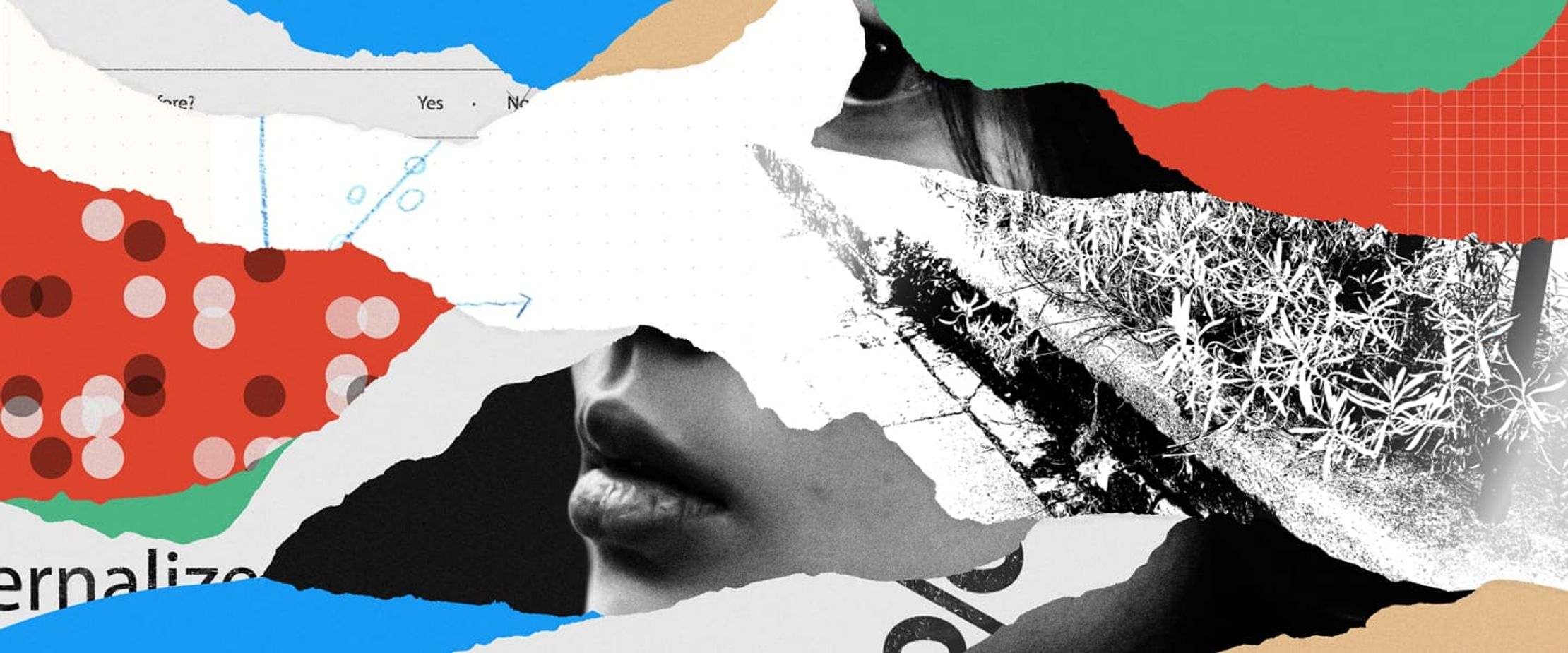
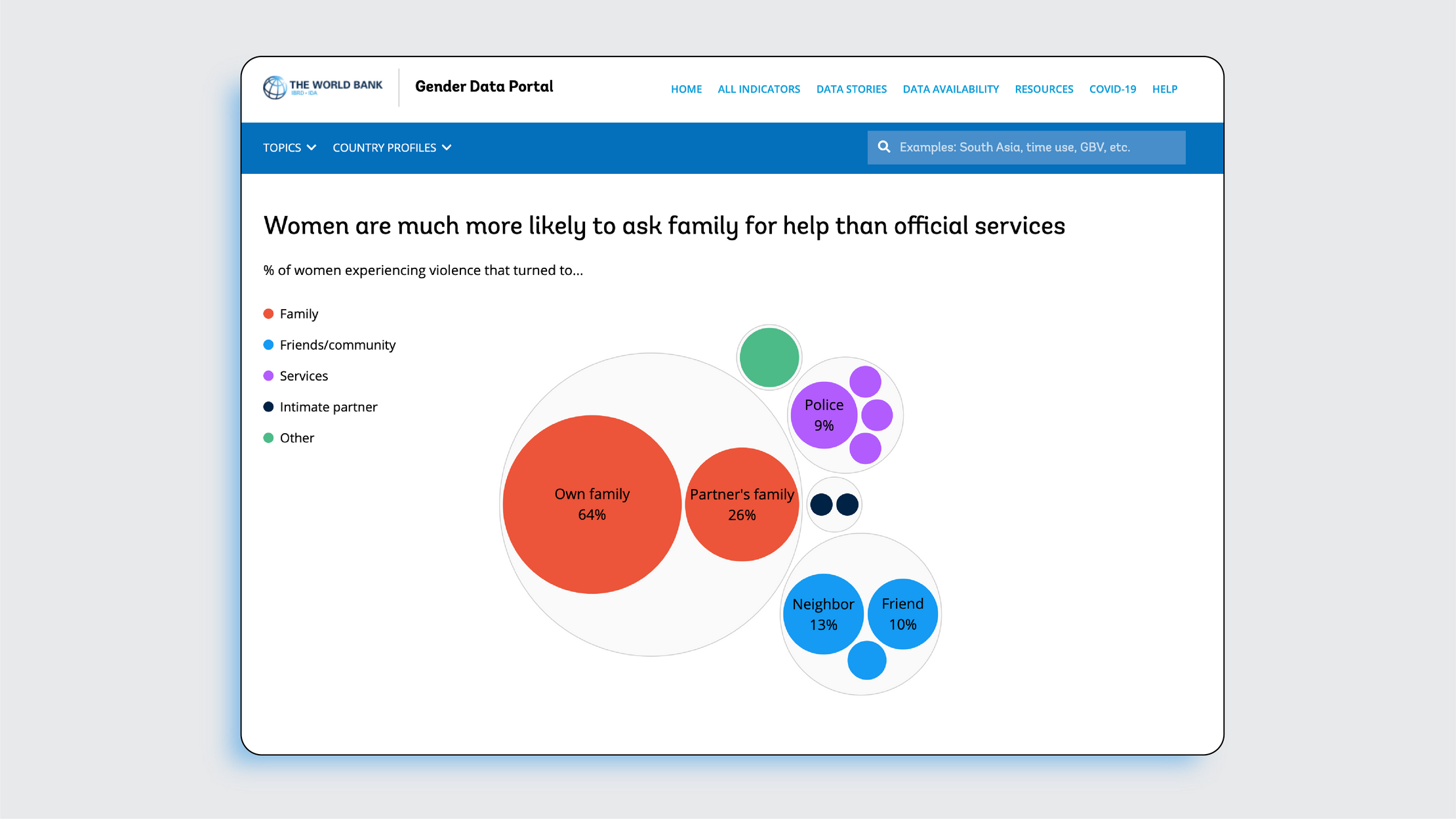
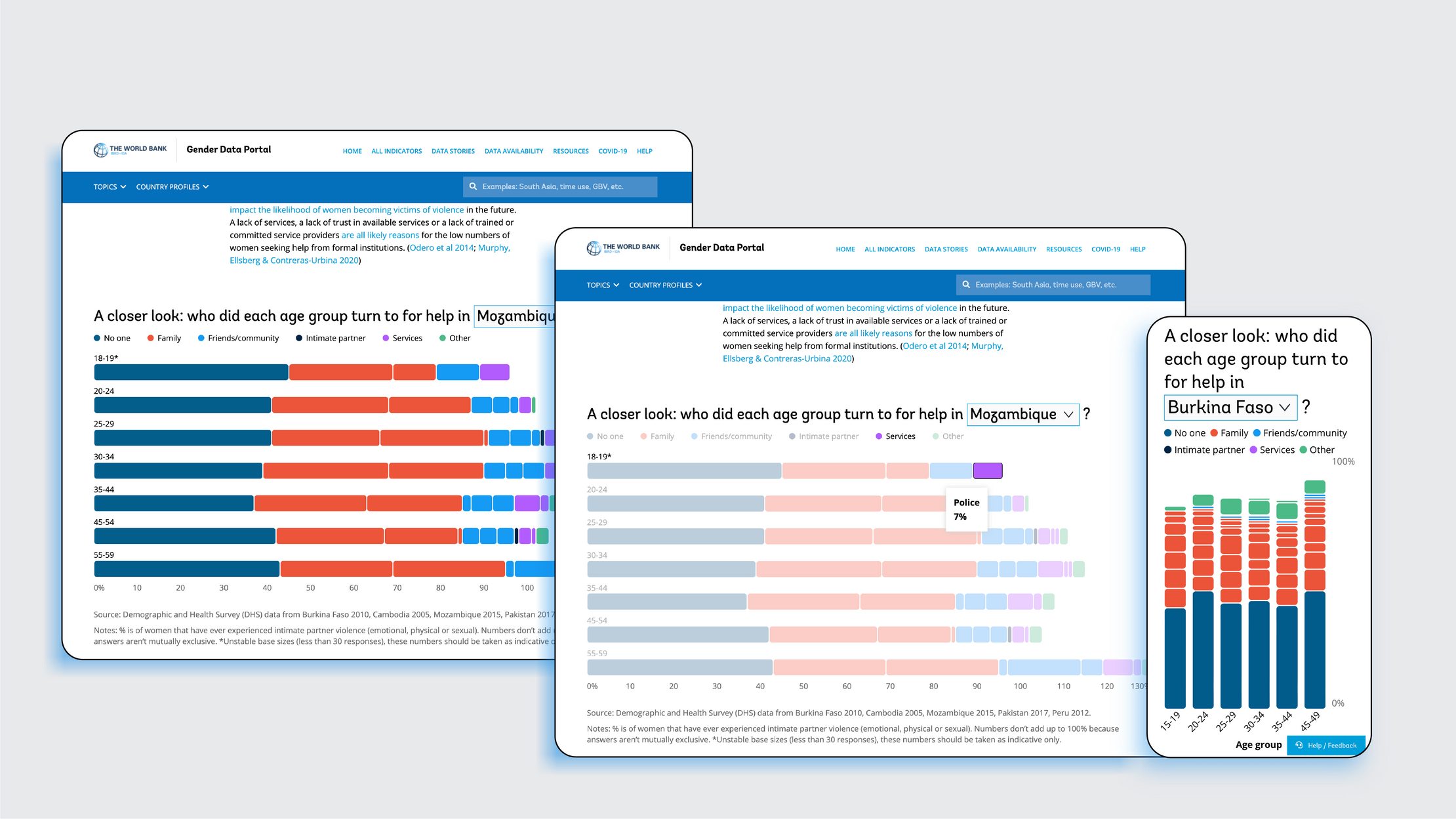
Get in touch:hello@beyondwordsstudio.com
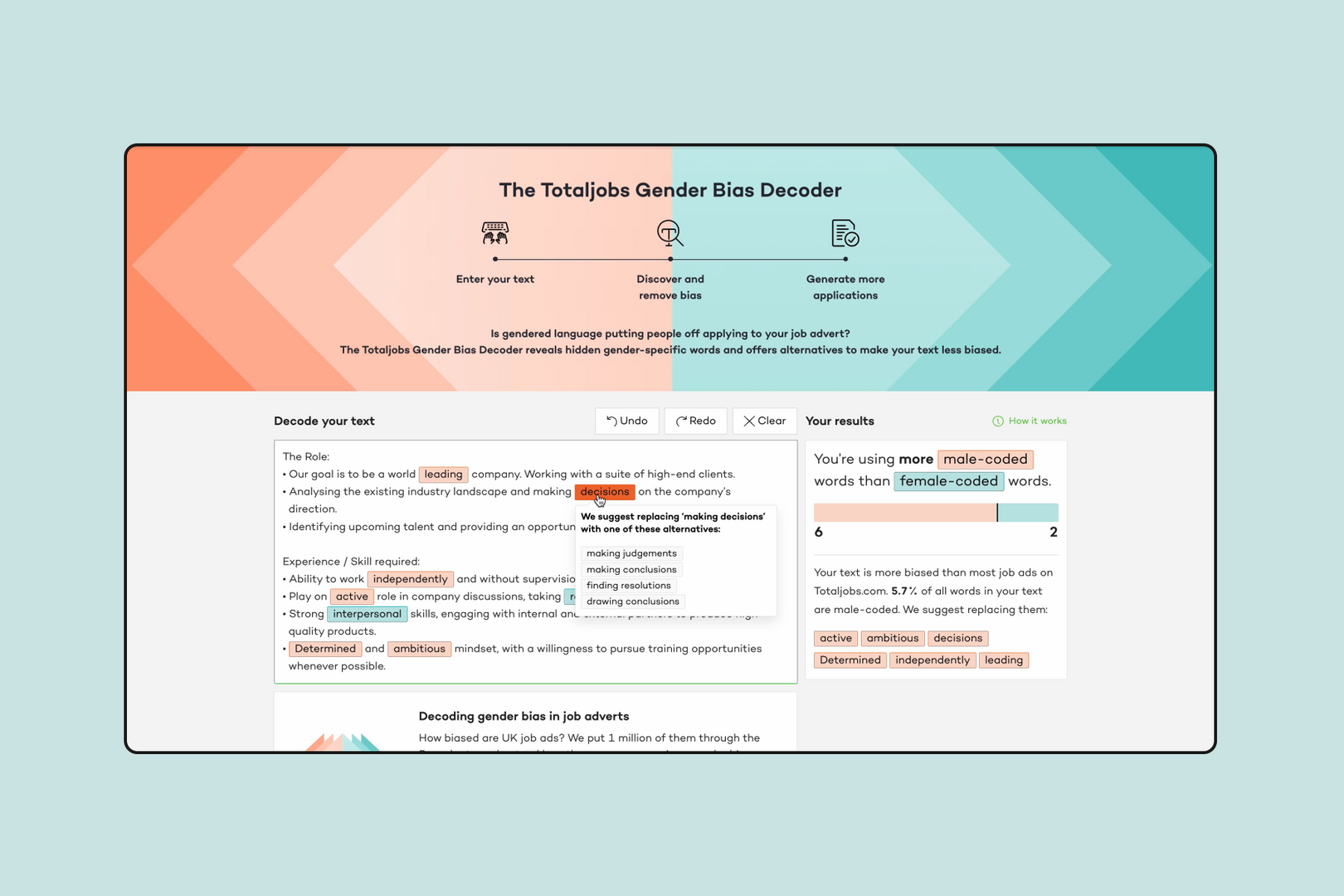
An interactive tool that lets recruiters discover where gender-coded language may be hidden in their job adverts.
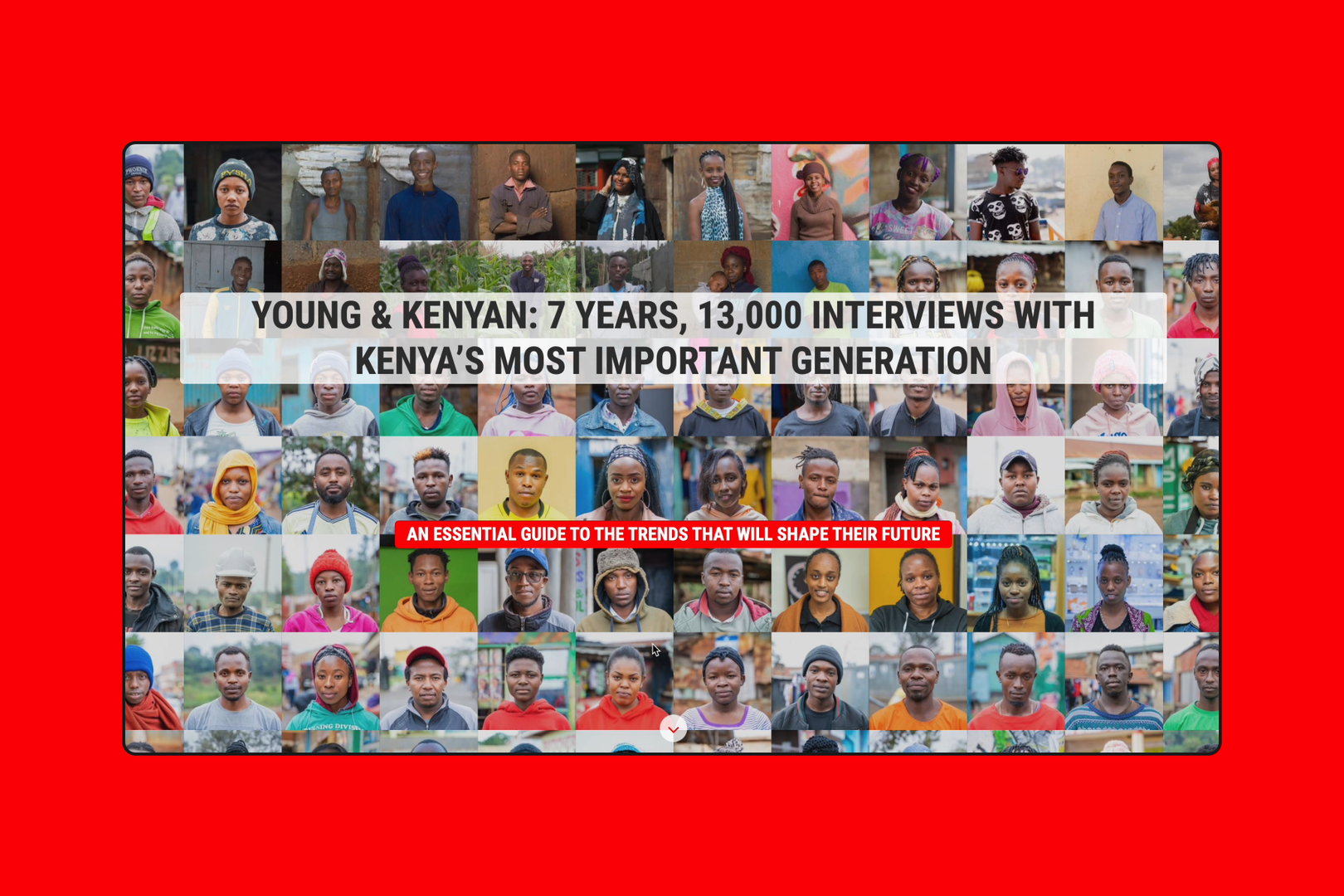
A ‘scrollytelling’ digital narrative designed to engage decision-makers using editorial, storytelling, data visualization and interactivity.
